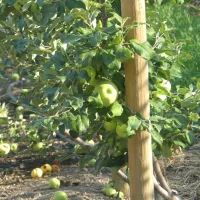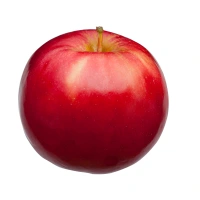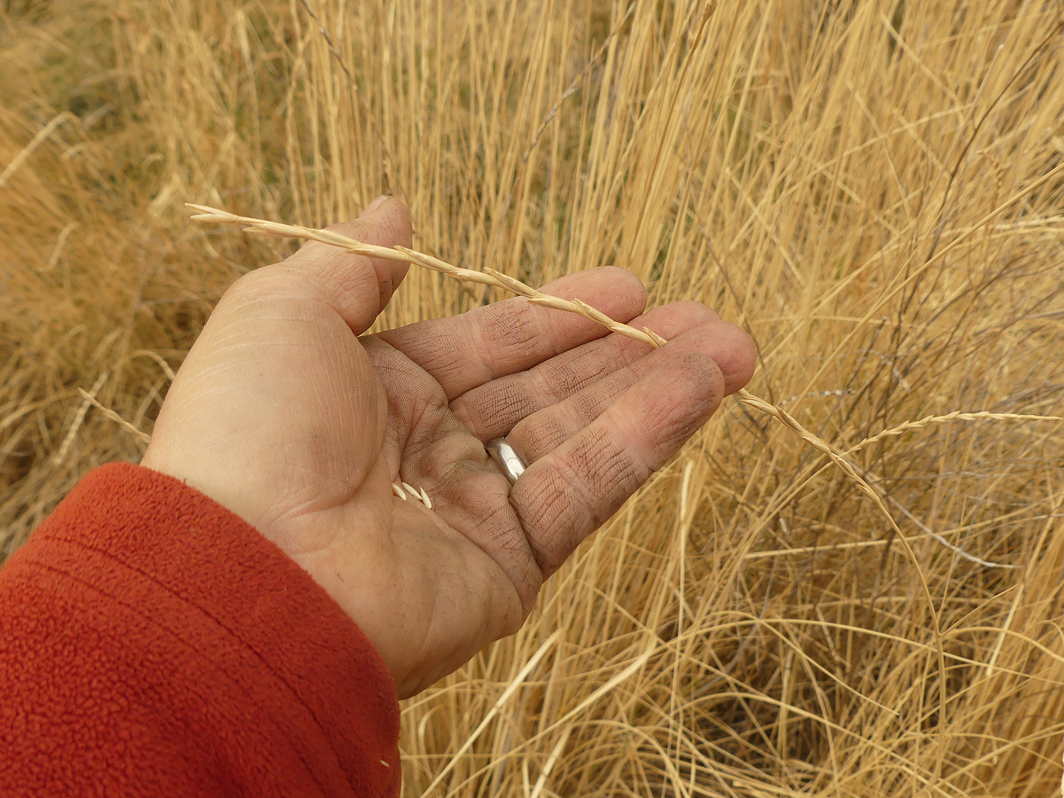As we work to express our identities as people of this land (as distinct from people who live on this land) …

Chelan River
… we do well to remember that the stone on the floodplain above is not a metaphor. I mention this because friends have been asking me, of late, to consider metaphor as a primary form of language. That I consider it as a primary force for alienation from land, a quite different conception, I thought it would be interesting to follow these observations through to see where on Earth they lead. Here, maybe?

Young Wetland in Priest Valley
Who knows. Let’s set off into Cascadia, my country and see.

Bunch of Volcanoes Hanging Out in “Vernon”
The Merriam-Webster dictionary, an American corporate identity, defines metaphor as:

It’s a term used to describe a form of language in which one thing, such as a rock …

Giant’s Head, Above Okanagan Lake
Another volcano!
… is described as something else, to allow common factors to define the object in a relational context. That’s a form of magic…
let in the bright
that my love meet
her dream tonight. Let in the smooth,
let in the warm
that sleep may keep
my love from harm. Let in the moon,
let in the stars
to watch my love
through these still hours.
… working on the principle that common factors can be written over each other in such a way that they exchange effects. Robin would have spoken about it as an expression of ancestral memory embodied in living experience. He would have spoken about language in the same way. On www.learnreligions.com, we get this effect written up as a definition of “sympathetic magic”:

There is a bias here, which places language and sign-making above bodily understandings, or, in other words, places the body at the service of language. It doesn’t place language as an expression of the body, as Robin did, who saw the world as a spoken entity, and not just in human speech. Surely,

… this blackbird riding out the wind on this peach tree and the human observing it are bodies, using language to communicate bodily space.

The only way to give the bird a body and deny it to a human is to consider a human and a bird as different levels of being, presumably on a scale of force (a human can shoot a bird; a bird can’t shoot a human) and on a scale of separation from natural forces (a bird is an expression of landscape; a human expresses itself in landscape).

Everything You See Here is Humanly Created, Although Not All “On Purpose”
It would only be a metaphor if used for a linguistic effect. If used as a language in its own right, it is a series of clear bodily expressions opening from each other and from a primary understanding of a body as something to be used or possessed. It is a why a human in Western tradition says “my body.” A troubling concept.
At any rate, given that the observers are human, these expressions are self-fulfilling.

A Quail is a Person, but not Human
It’s only a metaphor if we humanize the quail’s personhood. That would be depersonalizing.
What’s more, a head land…

Similkameen
…is not so-called because it resembles a “head” but because both “human head” (and “bird head”) and “head of land” …

Some Ogre Heads at Djupalónsandur in West Iceland
…embody the energy called hæt, in Icelandic,or height, in its devolved English form.

Snæfells, East Iceland
This “head” business is a newer development, one that comes from a world of abstraction, which places human bodies, arranged in tight social codes around language, at the centre of the world. Reading that backwards onto the past is a mistake. It effectively says: “first, abstraction, then the world.”

A New House in Vernon
An expression of a Christian code, on the principle that God spoke the world and out of his speech it came to be, in the forms of his speech, which were recorded in human language by a series of “inspired” humans in a repository called the Bible, which was a text, which was then used in place of God’s far-more-physical speech. That substitution is metaphor.
The human head, the house as a head or skull for the body understood as the mind, and the mountain head are not all heads because of magic. They are places of rising up and upward extension, which is more essential than either mind or magic, which are abstractions from it. In bodily terms, they are highest, in a concept by which the world is arranged by weight, with the lightest up high (air) and the heaviest down low (muck). It is a conception that used to place hospitals in high land, for health reasons, and blame illness on lowland, for the heaviness (death) it imparted to the body. Scientific understandings did great service to human populations when they set that aside. However, the concept also held a truth. One does, after all, gain an overview by climbing to a height, and one does enter the lightness of head-thought, or rationality, where one can see and understand large patterns. That these patterns are understood first physically is rather the point.

Kelowna, from Kopje (Head, or Cap) on the Commonage Land Claim Reserve
As the house I showed you above and the image of the young pines immediately above both show, this patterns can be social. If we were down in the ‘city’, we would see this, deep within the social world, with a perspective far more constrained (although not necessarily less rich):

Here’s a page from one of my Icelandic notebooks, in which I try to sketch a raven in a way that might allow language, experience and metaphor to be apprehended bodily, at least at first.

You can follow the evolution of the idea in the evolution of the title. It leads to a kind of gestalt that is compressed and decompressed at the same time.
Merriam-Webster helpfully goes further, by asking us to compare “metaphor” with “simile”, as follows:

That blue stuff is defining “metaphor” as a transfer, based on the Greek root “metapherein,” but that’s a little disingenuous, as it takes a word made from two roots and represents it as if those roots were not present. That’s the same as reading the Bible as the primary physical world and the physical world spoken by God as its secondary effect. The word “metapherein” speaks of pherein, to carry or bear (including “to bear children”) and two meanings of “meta”, the first of which is to “carry over into a different sense”, as more-or-less expressed in the English expression “in other words” or the prefix meta-:

In other words…

Simile also contains a secondary meaning, of the adjective meta, which speaks of self-referentiality:

Putting the two together, we get a sense in which “meta” is wit-full rhetoric that transcends its formative principles. This is the principle of science, a ladder of thought built on chains of “known” attributes of the world, combined in logical sequence. It is very powerful, and can lead through a secondary application of meta-thinking to powerful applied technology.

The Bonneville Dam Impedes Native American Fishers and Their Treaty Rights
Or, as I said it in a poem that has been roundly dismissed by two publishers in Vancouver, one for cultural appropriation and one for ‘advocating pre-modern thinking’:
…In a wool tangle of freeways and a jumble of dynamited mountains,
a woman holds one end of a Coleman cooler; her husband holds the other:
they carry their past and future. In the cooler is ice
from the Texaco up the explorers’ road, and ancestors
who gave themselves up by following the line to the hand
before they hit the concrete wall, all silver. Yes,
this is no modern story, but it is also not an old one.
Women I loved in the pines of the Motherstone
are dressing up as their selves in the city now, what sorrow.
They are saying they would never live in Ritzville.
They would never make a home in Squilax.
They are saying the dead live there, or the Confederacy, or Old White Men,
and they sure got that right, but I am remembering their mothers
who picked peaches until their breasts itched,
to bake them into pies in the winter, so they could set the sun in the centre
of a family table and pray to it, just for a moment,
in the name of the Father and the Son and the Holy Ghost,
or just for the sweetness. It clears the mind,
living where life is as thin as a gesture of light
and the things of this world, that seemed so solid once,
blow off like scudding clouds scudding clouds and clouds scudding.
The sun is an egg’s eyeball nestled under knocking stones…
Well, they are not Cascadians. They are in control of its Canadian cultural machinery, and have paid for the privilege, but to go further, to use that technology to read that technology back onto the fishers, or back onto this…

… and to say that the dam is an extension of native fishing or that this stone in the bunchgrass is a “head” because it is a metaphorical understanding, or that this flax …

… is an eye because it is a metaphorical understanding of a human eye, would compound their presumption with error. The eye came first: the island, the yolk, the eye, the ear, the point of difference, of isolation and compaction within seeing or the unformed sea.

The Atlantic, Off Óseyartangi, Iceland
It might be a linguistic effect of a language that has devolved from that to understanding itself as a series of signs, but it can’t be written backwards onto the world without destroying both world and the bodily understandings that link humans to it. Does this matter? Yes.

It leads to such things as a tree planted to block a view, then felled by the city to settle an argument over a view, then poisoned a year later with weedkiller, set beside a dead automobile parked without license (and against civic law) on a public street, in a landscape of weeds. The disrespect for bodies, the body of the Earth, the bodies of living creatures, the social body and individual human bodies, is profound. The children living on this street absorb these lessons as their primary orientation to the Earth. The point is not that the image illustrates a correspondence between how bodies are treated in society and how the Earth is treated, as a metaphor, or a carrying-over in an aware (ie conscious) way, but that the body understands all this immediately and has reacted to it long before trained systems of thought kick in and make it into argument or cover it with deflections. It matters because the planet is in distress and …

www.theguardian.com/environment/2015/mar/08/how-will-everything-change-under-climate-change
The work of metaphor is important, but it is not this:

You might call that the Chelan River, if you wish, and remember that this post started with a head on its bank…

… but that’s just a word: “river.” To a body that lives here, it is life, and here, and body. It is a self-that-is-the-earth oriented-in-space. If a metaphor is to be made from that, it comes later, and is subordinate to that understanding, because if it replaces it, if the metaphor comes first, then the body is not “here” but living in an expression of a distant social place, as a metaphor, and we who live on Earth will die.

Weeds, and a human-controlling fence sold as an animal-controlling fence, reflected in a mud puddle polluted with dumped cement from mix trucks is no goal. Let’s practice, instead, saying what things are.
Categories: Artificial Intelligence, Arts, Earth, Ethics, First Peoples, Gaia, Grasslands, Nature Photography, Spirit, Water














What a profound reminder, re-bodyier. And now for a blog on saying what things are. “The world as a spoken entity.” Thank you for bringing Robin Skelton to life as well:
“… would have spoken about it as an expression of ancestral memory embodied in living experience.”
LikeLike
That’s 2 blogs? “What things are”? and “ The world as a spoken entity”? So, um, blush, this is not universally known stuff?
>
LikeLiked by 1 person
Known by universal ancestors, maybe…
LikeLike
Ah, thanks, eh. Þakka þér! Danke vielmals! Merci! Tak!
>
LikeLiked by 1 person
I can’t get though all of this now, but so far, I appreciate that you put language back in its place. I like the idea of trying to sketch a being in a way that “might allow language, experience and metaphor to be apprehended bodily, at least at first.” Maybe the next sketch will be a dance, and we’ll just have to imagine it, or do our own. 🙂
LikeLike
OK, I stayed with you. 🙂 Wonderful. We need frequent reminders of the primacy of the body. But the Naomi Klein quote and the final photo are disturbing.
LikeLike
We should give endurance awards here at Okanaganokanogan! Well done!
>
LikeLiked by 1 person
I love it!
LikeLike
Thanks for loving it!
>
LikeLike
For cultural reasons, change is highly resisted. Even the opportunities given by change are resisted. It is very strange.
>
LikeLike
Sea changes are very hard, kind of like volcanic forces I guess, taking eons of time to make a shift.
LikeLike
And yet one must begin. 😉
>
LikeLike